Installing a Honeywell LTE-IA or LTE-IV Communicator to a VISTA-21iP System
Related Products




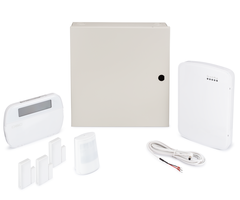


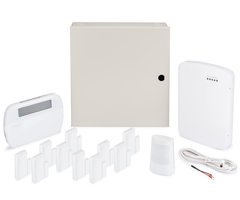
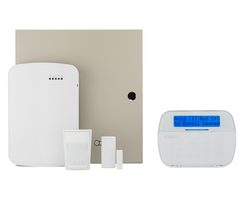
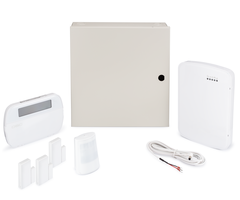
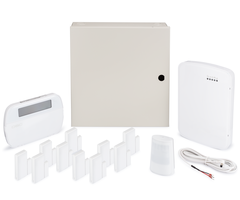

Related Categories
Description
In this video, Michael from Alarm Grid shows you how to install a Honeywell LTE-IA or a Honeywell LTE-IV with a Honeywell VISTA-21iP Security System. An added LTE-IA or LTE-IV will allow your VISTA-21iP System to communicate with AlarmNet360 across both IP (wired ethernet) and cellular. The LTE-IA uses AT&T LTE, while the LTE-IV uses Verizon LTE. Other than that distinction, they are the same communicator.
A Honeywell VISTA-21iP comes with a built-in IP communicator for connecting with the AlarmNet Servers and Total Connect 2.0. But if you want to have it communicate across cellular for greater reliability, then an external communicator is needed. However, the VISTA-21iP requires you to disable the internal communicator to use external communicator. So if you plan on adding a cellular or dual-path communicator to the VISTA-21iP, then you will need to disable that internal IP communicator by repositioning the jumper. Please note that this should only be done while the system is powered down!
There are several things to keep in mind if you are considering adding a Honeywell LTE-IA or LTE-IV to a VISTA-21iP. For one, the panel must have a PROM Chip of 3.13 or higher to support Total Connect 2.0. Second, you must power down the system before completing the installation. Third, you can use the same Honeywell 1361-GT Transformer to power both the communicator and the panel. If you have an additional transformer, it can be kept as a backup. Fourth, you will need an alarm monitoring plan to activate the communicator. You must also activate the *29 programming field for the communicator to work. It is recommended that you wait until the activation to adjust the *29 programming field to prevent any error messages or trouble conditions. Your monitoring provider can help you adjust the setting. Remember that you will also need the MAC and CRC codes from the LTE-IA or LTE-IV module to finish the activation. We advise taking a picture of the sticker with the information and keeping it somewhere safe for easy reference.
https://www.alarmgrid.com/faq/how-do-i-install-the-resideo-lte-ia-or-lte-iv-on-a-vista-21ip
http://alrm.gd/get-monitored
Transcript
Hi, DI wires. This is Michael from Alarm Grid. And today, I'm going to be showing you how to install a Honeywell LTE-IA or a Honeywell LTE-IV with a Honeywell VISTA-21iP security system. Now the reason you're adding a Honeywell LTE-IA or a Honeywell LTE-IV to a VISTA-21iP security system is because this module is going to serve as the communicator for the system, which allows it to communicate with AlarmNet 360. This is necessary for alarm monitoring, and it also allows you to use Total Connect 2.0 to control your system remotely, provided that the service is included in your monitoring plan. Now there's actually a newer version of the Honeywell VISTA-21iP, called the Honeywell VISTA-21iP LTE, and that one supports a plug-in module that you can just plug in for LTE communication, and you won't have to disable the panel's internal IP Communicator. But this older VISTA-21iP, it has a built-in IP communicator, but you have to disable it if you're adding an external communicator, like the LTE-IA or the LTE-IV. So that's what we're going to be showing here. You have to disable that internal communicator. And the advantage of having both communication paths is that in case one goes down-- maybe there is an internet outage-- it will have another path to rely on. So having those two parts available really ensures reliable alarm monitoring. And like I said, with the LTE-IA or IV, you get both cellular and IP. So that's the benefit there. And you also want to make sure that you are running a high enough firmware version through the PROM chip. Ours is on 4.23. And the minimum that you need to use Total Connect 2.0 on a VISTA-21iP is 3.13. So make sure you have at least 3.13 for the PROM chip. If you don't, we sell upgrades on our site. And we have a different video for removing and replacing a PROM chip. So be sure to follow that if that's necessary. So 3.13 is at least what you need. Now I'm going to be showing you the process. We have a Honeywell LTE-IV for our demonstration. And I'm going to start by doing the first step, which is powering down the system. OK, so, first, we're going to disconnect the backup battery, which is hidden behind the module here. I'm just going to move this out of the way so you can see it. And there are batteries disconnected there. We'll worry about that later. And then we have a Honeywell LT-Cable, so I don't have to unplug the transformer from the wall outlet. Normally that's what you would do. And so we're just going to power that down. And now our system is completely powered down. And so the first thing I'm going to be doing is the VISTA-21iP's already set up with a transformer. It's using a Honeywell 1361 transformer. And that can be used to power both the panel and the communicator. You can use two separate transformers if you want, but really, there's not really much of a reason to do that. And we can just keep our connections setup at the VISTA-21iP. And so what I'm going to start by doing is I'm going to take a two-wire connection, and I'm going to be connecting it from the panel of these first two terminals to the first two terminals on the Honeywell LTE-IV. And we have four-conductor wiring here, but we are only going to use two of the wires. So we put two of them wrapped around just to not use-- we're just going to use the red and black wires. And since this is AC power, polarity doesn't matter, and we can go from either terminal to either terminal. So now, I'm just going to go in and set this up. So we're going to be running our wire through the backplate to make sure we can close the cover later. And we have our terminals loosened up already. Like I said, polarity doesn't matter here. It's just as long as we can get it into the proper terminals. So we would need one and two. The red and black wire. There we go. Looks like they're in there pretty nicely. And we're just going to go and tighten them down. And now we're going to show the connection up here on these two terminals. We don't need to remove anything. Just going to be inserting the wires. We'll be adding that guy back in there. Our wires are nice and secure. Now before we go and power on system, I do want to show you the jumper that you need to move. You want to make sure your system's completely powered down when you do this. Right now, it's on the top two prongs, indicating that the internal IP communicator for the VISTA-21iP is enabled. And we need to move it to the bottom two, like so. See the bottom two. So that disables the internal IP communicator for the VISTA-21iP, which allows us to add an external communicator. So that's very important. And make sure you do that while the system's powered down. Do not do it while it's powered on, or else you'll mess up your system. So now that we have our power connections made, we're going to power on the VISTA-21iP system. And we're going to be showing you the lights on here to indicate that it's receiving enough cell signal. And this will take a moment to boot up, so feel free to go get a cup of coffee or something. OK. So after booting up, you can see that we have the proper LED lights. In this case, you're looking for at least one green LED light and two yellow LED lights. We have one green, one yellow, and one red. So we might not be getting a strong enough cell signal, which is a good time to mention, if you do find that you're not having enough cell signal, you may need to add a cellular amplifier or a cellular antenna to your communicator to boost cell signals. That's very common if you have it in a rural area or something, where you're not getting strong enough signals. And remember, there are AT&T and Verizon options available. This is the Verizon one. If you find that AT&T works better in your area, go with that. Check coverage maps if you aren't sure. Remember, it's the LT-IA for the AT&T, and the LTE-IV for Verizon LTE. So after this, once you do confirm that you have strong enough cell signal, you would go and mount it. You can use wall anchors for the mounts. Zip-It anchors also work pretty well. And you're going to have it mounted outside of your panel's metal cabinet, just somewhere where it can get strong enough cell signal. So once you have ensured that you have strong enough cell signal-- remember, you're looking for two yellow LEDs, one green LED-- you can go ahead and power everything back down. You're going to be completing the four-wire connection to the communicator and the panel. So we're just going to power back down. Everything's powered down, so we're ready to complete our connections. You can see here that we have our 22 gauge four-conductor wire here. And by the way, if you have a similar gauge wire, 18 gauge, around, that should work just fine. Just use whatever you happen to have on you. And really, the colors aren't super important, as long as everything is going to the proper location, that's really what matters. But we're going to use the traditional coloring. And I'm going to go through what goes where. So first, we have the red wire, which is for positive power or the 12-volt power. And that's going from terminal three on the communicator to terminal five on the VISTA panel. So three on the communicator to five on the panel. And then we have the black wire for the ground connection, the negative power connection. And that goes from terminal four on the communicator to terminal four on the panel. OK, so then we have the green wire, which is for-- it goes at terminal six at the communicator to terminal six at the panel. So six to six. And this is for data to the panel, so it's the communicator speaking to the panel. And lastly, we have-- this would normally be a yellow wire. In our case, it's white. If you have a white wire instead of a yellow wire, don't worry about it. Just use white instead of yellow. And this goes from terminal five on the communicator to terminal seven at the panel. Five at the communicator to seven at the panel. And again, that's the panel communicating to the communicator. So we're going to go and wire these up. And so our wires at the communicator are all good. So now we're going to go and wire them to the panel. So now our connections between the communicator and the panel are complete. But I do want to go over the other connections that you would make before powering on the system. We're not going to show all of them here today. But you will do an ethernet cable from your router to the communicator in this port right here. It says "ethernet" at the bottom. And one thing to note about that, you do have to bend the ethernet wire. It's a really tight fit. And that's completely normal, but it might feel a bit awkward how you're bending the ethernet cable to fit it in there. But don't worry about that. That's fine. We also have the backup battery, which we disconnected ours to power ours down completely. It's six-volt DC, 3.1 amps. And since you're using DC power, make sure to observe polarity. You see, we have the black wire in the proper connection. And once we power everything fully up, I'll show you the red wire in the proper connection as well. So now that we've done that, once you've done the ethernet connection and you know about the backup battery, we can power on our system. We have our system powered back on now, and our communicator is receiving power. We'll also go ahead and connect the backup battery here. Just take it and plug it into the port. Nice and secure. There and clicked into place, so that's good. Now if you get any troubles on your system upon boot-up, you can clear them using your master code plus one. You'll get a nice chime to let it know that the command went through. So do that if you see any troubles. You will need to activate the communicator for alarm monitoring service. And this includes enabling the star 29 field in programming. We're not going to show that here today. In fact, we actually recommend waiting until your activation slot with your monitoring company-- hopefully Alarm Grid. Because otherwise, you'll get a trouble condition on the system, and that would be pretty annoying. But just know that when you do go and activate the communicator, you will need to provide-- you will need to enable that star 29 field. And one last thing before I forget-- before you close your communicator, make sure to take a picture of the MAC and CRC codes. It's on this white sticker here. You're going to need that when activating for monitoring service. It's also a good idea to have the IMEI number somewhere safe. But you can just take a picture of that and store it somewhere safe. If you'd prefer not to take a photo, you can write it down and keep it somewhere safe. But just know that you will need the MAC and CRC codes when you go to activate for monitoring service. So have that information ready before you go and close the communicator. So that's how you install a Honeywell LTE-IA or IV to a Honeywell VISTA-21iP security system. If you have any questions about the Honeywell LTE-IA or IV or the VISTA-21iP or about alarm monitoring services in general, send an email to support@alarmgrid.com. If you found this video helpful, make sure to give it a thumbs up below to like the video. And remember to subscribe to our channel for updates on future videos. Hope you enjoyed the video. Thank you.
- Uploaded



